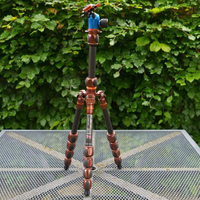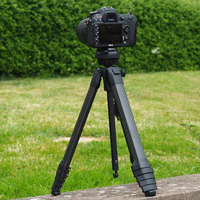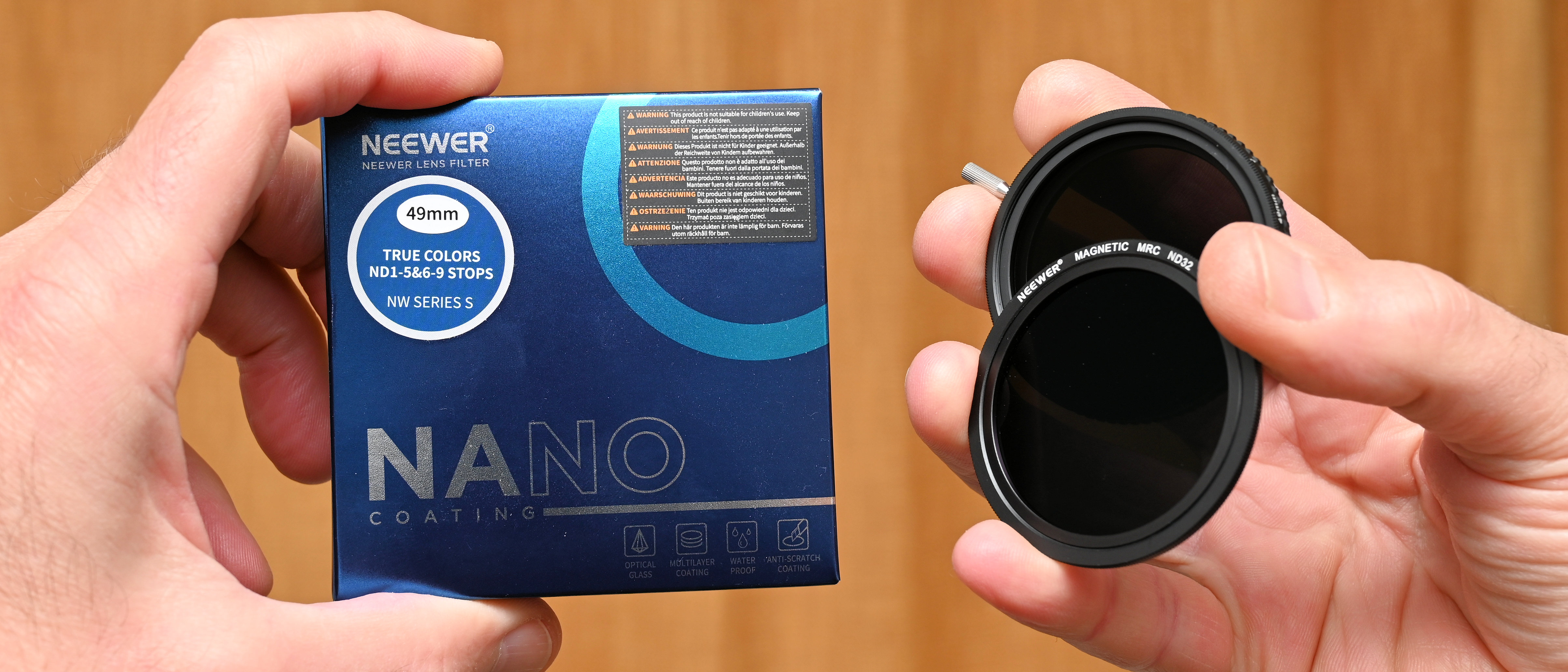Digital Camera World Verdict
I’m a sucker for good set of legs and the Neewer LiteTrip LT38 carbon fiber travel tripod is certainly that, plus a clever ball head on top. I like the carbon build and solid performance, and that it’s so travel-friendly, but it doesn’t come cheap.
Pros
- +
Quick and easy setup
- +
Luxury carbon fiber build
- +
Decent maximum height
- +
Ultra-low-level shooting
Cons
- -
Not the shortest for stowage
- -
Pretty pricey to buy
Why you can trust Digital Camera World
Think of a genre of photographic accessory, and there’s probably a Neewer option (or several) available to buy. The company has been going since 2011, expanding its product lines with a wide variety of studio and location lighting kits, video gear, lens filters, tripods and more. The LiteTrip LT38 that I’m reviewing here aims to take on some of the best travel tripods, competing with the biggest names in the business.

Neewer LiteTrip LT38: Specifications
Material | Carbon fiber |
Folded height | 50cm / 19.7" |
Maximum operating height | 155cm / 61" |
Minimum operating height | 15cm / 5.9" |
Weight | 1.43kg / 3.15lb |
Load rating | 10kg / 22lb |
Sections per leg/centre column | 5 / 2 |
Locking leg angles | 3 |
Feet | Rubber pads |
Case/bag included | Padded soft case |
Neewer LiteTrip LT38: Price
Manfrotto might well be the first name that springs to mind when you think of tripods but some of the most innovative and exciting travel tripods on the market come from other makers. I’d include the 3 Legged Thing Leo 2.0 + AirHead Pro and the Peak Design Travel Tripod on my hit list. The Neewer goes in to bat against both of these versatile and very travel-friendly tripods. If we stick with carbon fiber across the board, the Neewer costs a bit less than the 3 Legged Thing and only about half as much as the Peak Design, with a list price of $300 / £286 / AU$460. Ultimately, it’s certainly not cheap to buy but I reckon it’s still good value.
Neewer LiteTrip LT38: Design & Handling
There’s been an almost comprehensive convention among travel tripods of late, kicked off by the now obsolete Giottos Vitruvian range. Taking its name from Leonardo da Vinci’s Vitruvian Man, the legs swing upwards. And when it comes to travel tripods, the legs swing up by much more than any mere mortal could manage, so they point vertically upwards and surround the extended center column. The upshot is that the feet surround the head, enabling a big saving in folded height and making these travel tripods stow away in smaller spaces. The 3 Legged Thing Leo 2.0 + AirHead Pro certainly follows that design ethos, while the Peak Design Travel Tripod takes a different route. In the latter, the legs don’t swing up but are shaped to fold around the center column, thus making the tripod take up a slimmer diameter when folded.
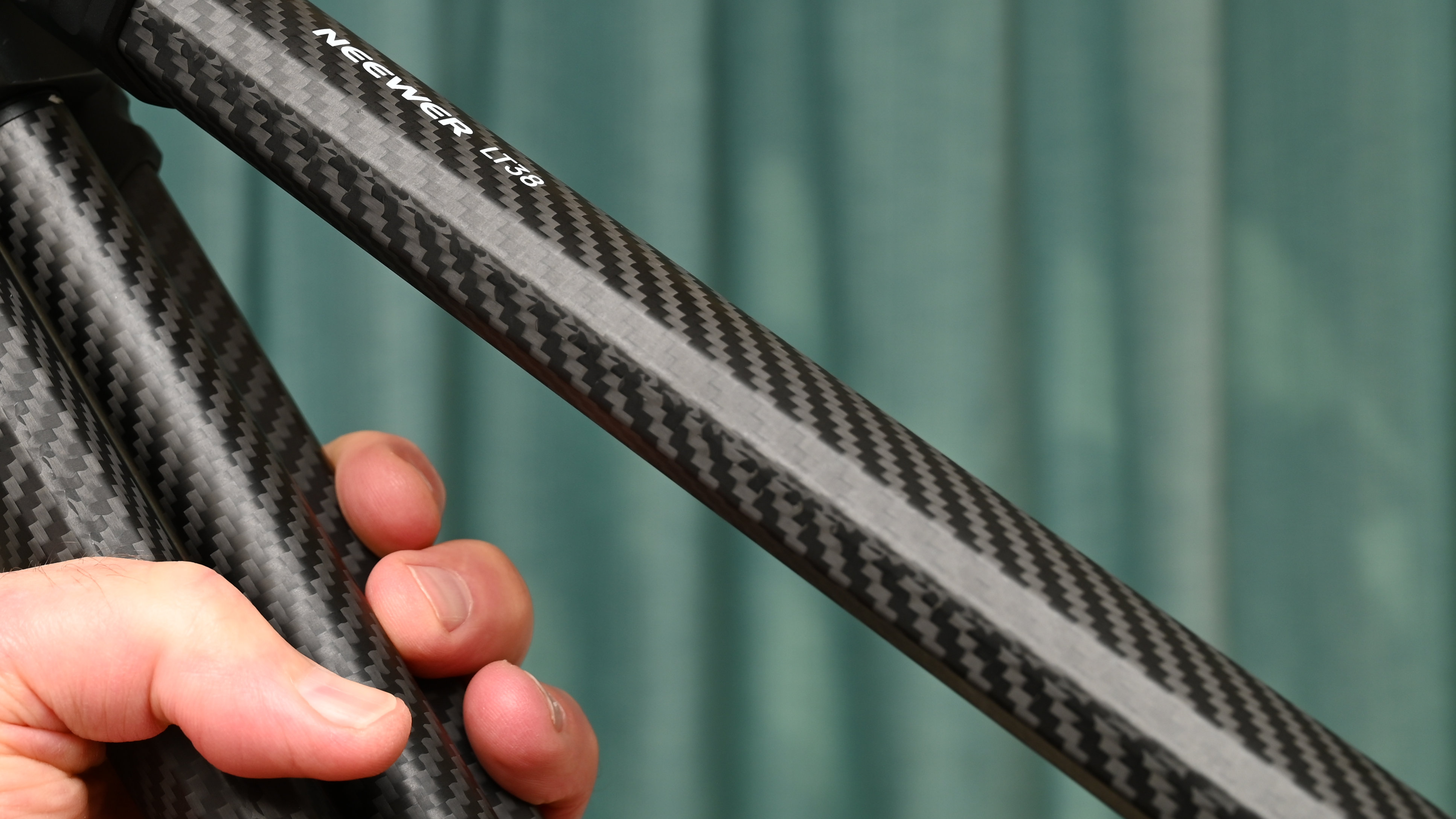
The Neewer LT38 takes it design cues from the Peak Design. As such, the legs don’t swing up, but have a flattened profile rather than being based on circular tubes. That makes the tripod elegantly slim when folded. I like that but what I like more is that I don’t have to fiddle about with the center column and legs so much when setting up the tripod, and then trying to arrange the feet around the head when putting it away again. All in all, setting up and stowing away can be much quick and easier.
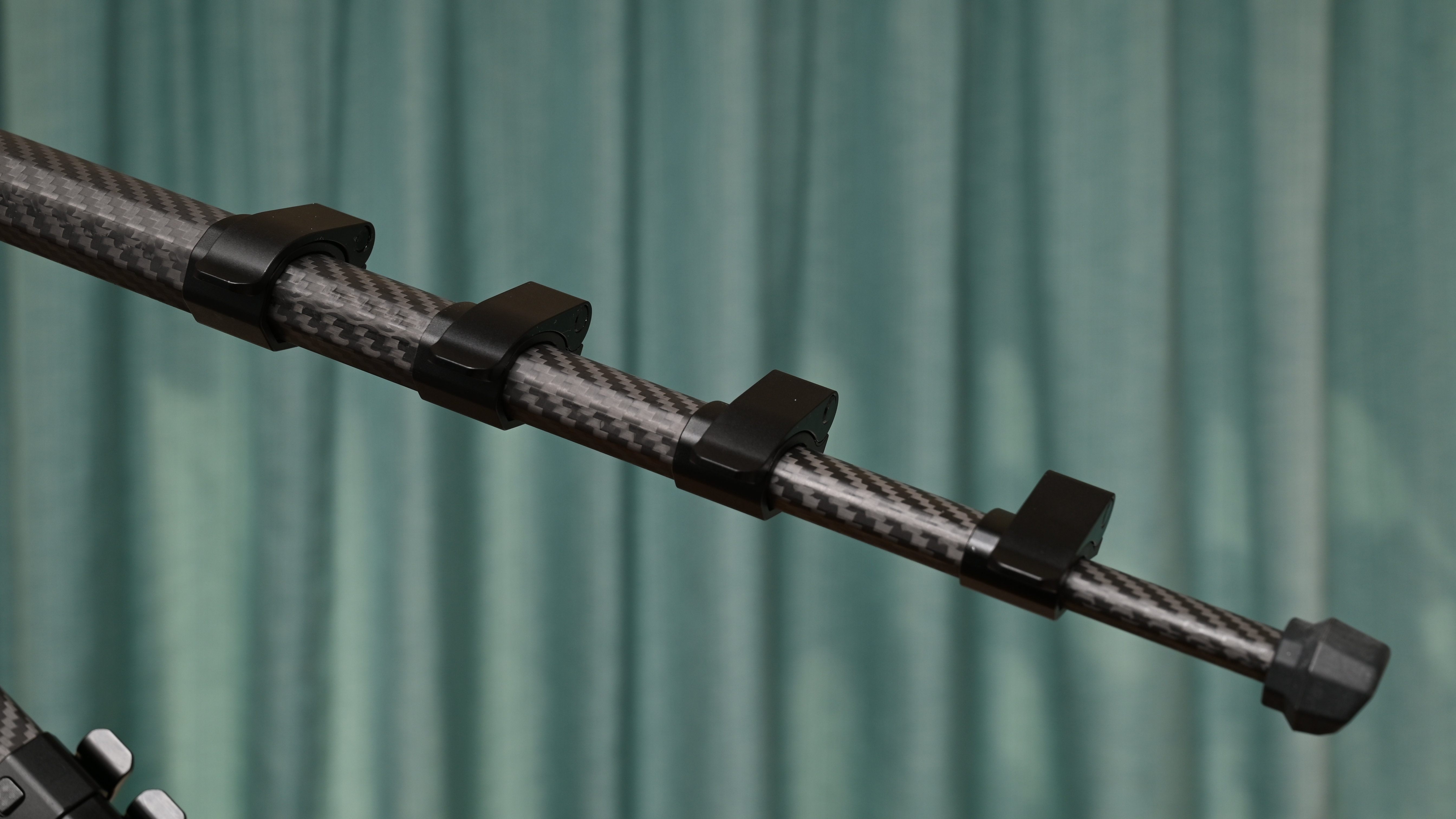
One thing that can be time-consuming if you need to shoot at anything more than a very modest height is that each leg of the tripod has no less than five individual telescoping sections. That results in a total of up to 12 section clamps to contend with, if you want to use the legs at or near full stretch. Even so, that’s pretty common in travel tripods, as it helps to ensure a small stowage size along with a respectable maximum operating height. It’s the same with the other two travel tripods that I’ve mentioned. A bigger (or rather smaller) problem is that the bottom sections of each telescopic leg can end up being very thin and spindly. That’s not the case here though, as even the bottom sections of the Neewer look and feel chunky and solid.
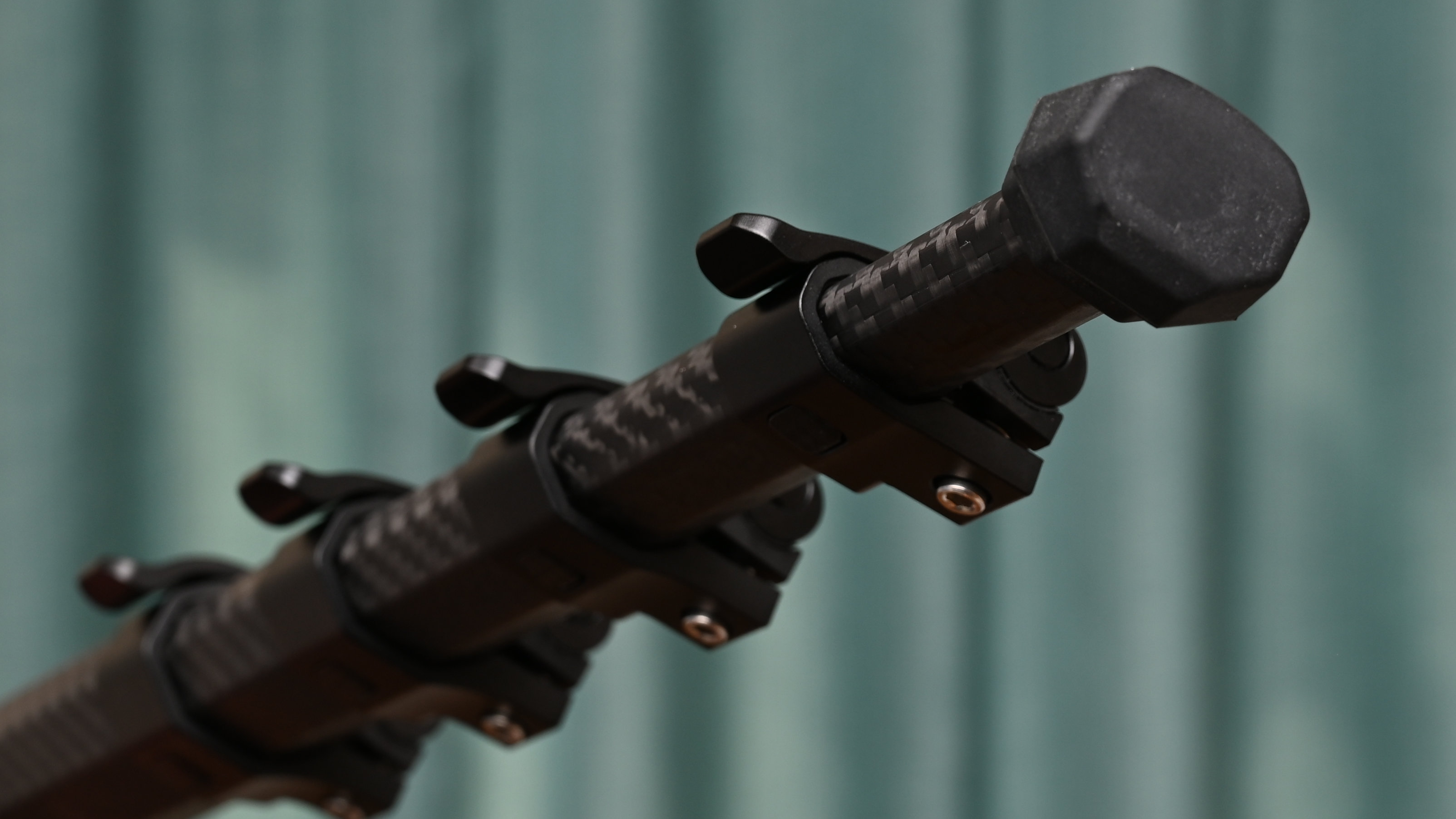
At the bottom of the legs are chunky rubber feet which grip well on a wide range of surfaces and terrains. Another bonus is that the locking levers for each leg section are quick and easy to use – arguably even quicker and slimmer than the alternative of twist-action clamps that are often featured. For one thing, it’s particularly speedy to grab all of the levers for every leg section in one handful and open or close them when the legs are fully retracted.
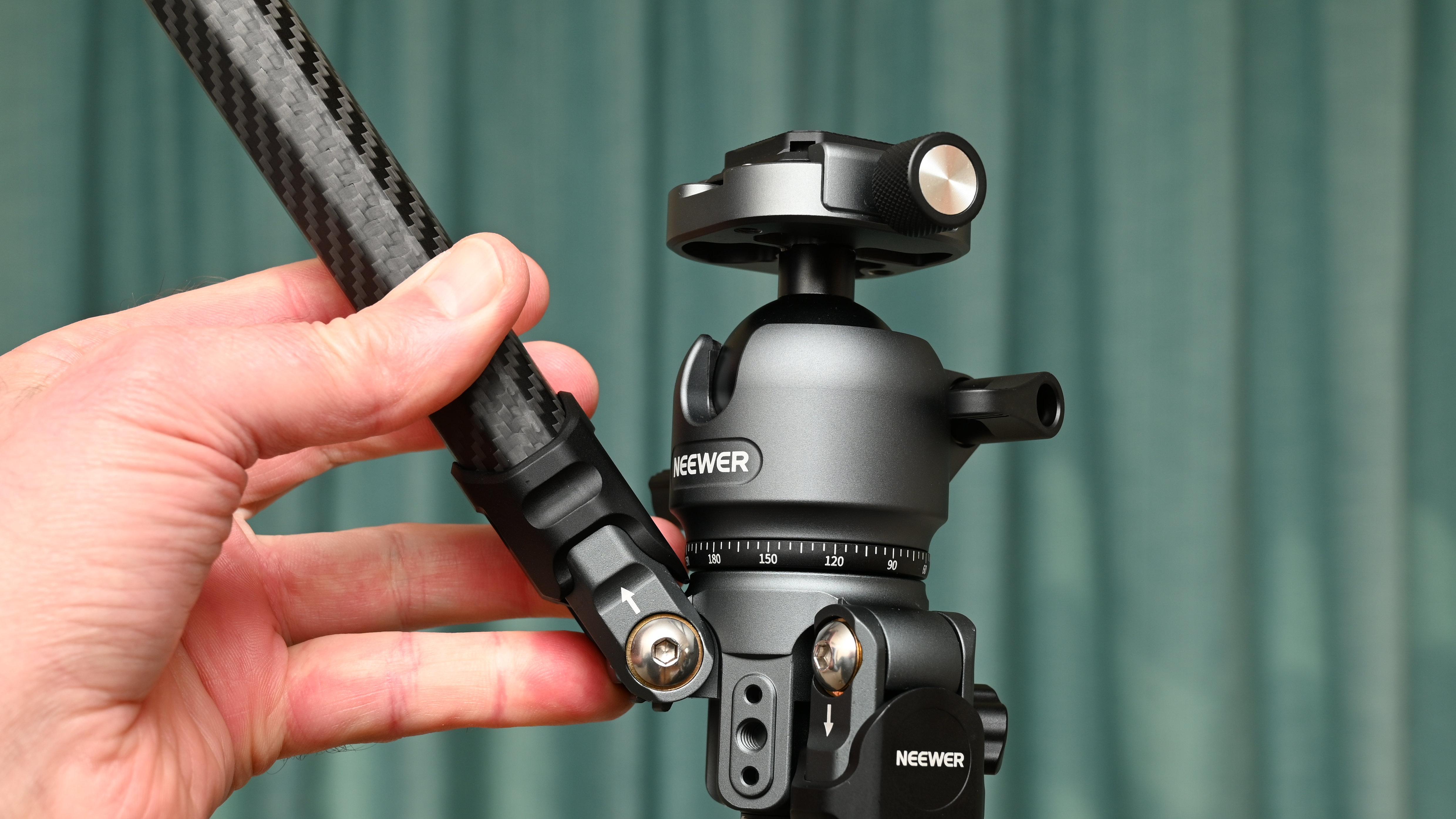
To add stability in low-level shooting, as well as helping for setup on tricky terrain and working around obstacles, the legs have three different locking angles, relative to the center column. There’s nothing new in that but, again, the lock/release mechanisms for playing the angles are really simple and effortless to use. Better still still, instead of stopping at the third locking angle, you can keep on going and angle the legs upwards. That can come in handy in tight spaces, if you want to rest one of the tripod feet against a wall.
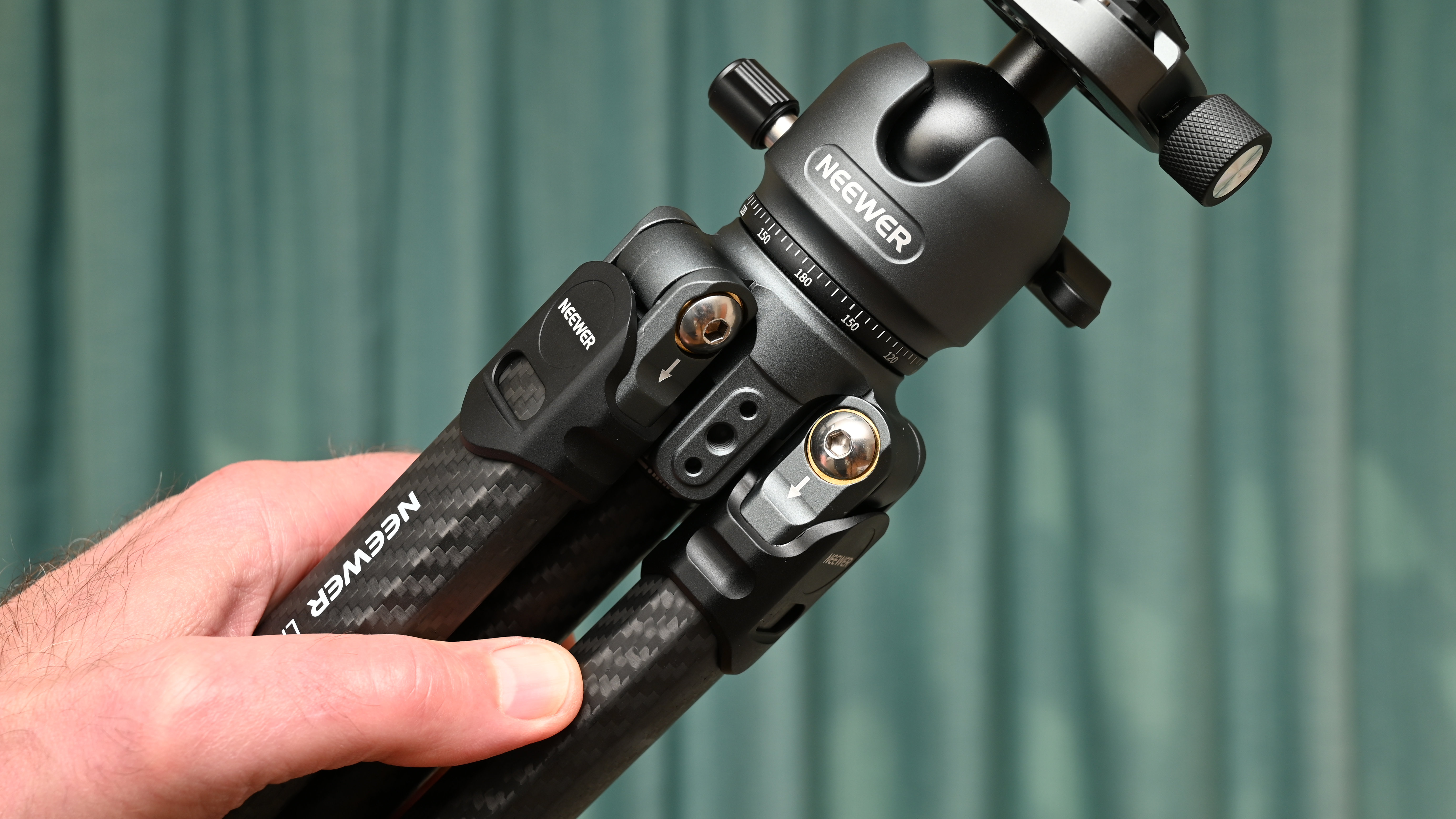
Tripods these days are often about more than supporting just a camera. With that in mind, there are two standard ¼” threaded sockets in the tripod spider, at the top of the legs. You can use these for attaching support arms, LED lamps, microphones, monitors and other accessories. It’s another one of those little things that helps to add versatility.
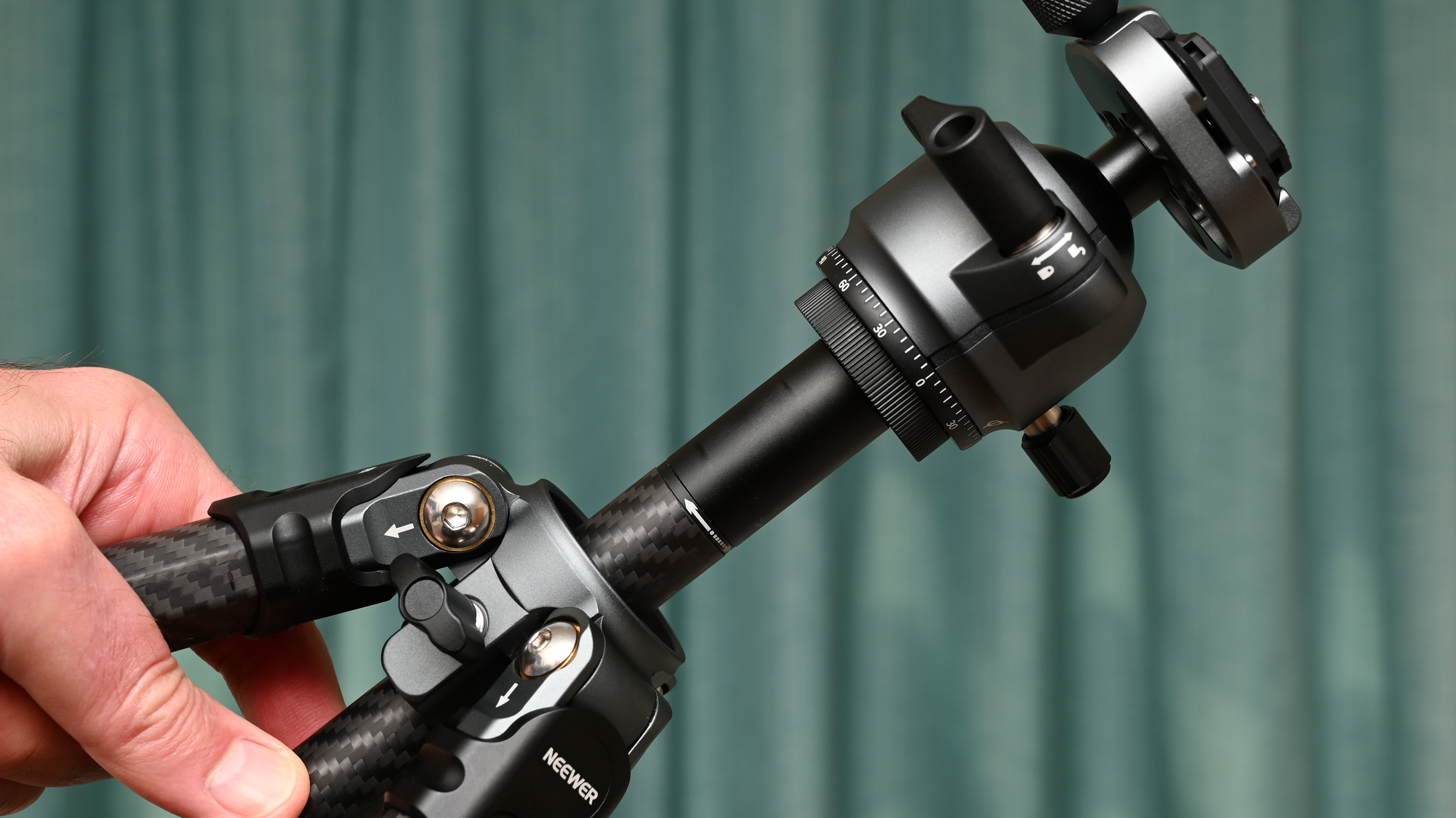
It’s easy to focus on the maximum operating height of a tripod, especially when it comes to travel tripods which can be a bit limiting. In this case, it’s 155cm / 61", or an inch over 5 feet, which is pretty good for the breed. What’s equally important in my books is the minimum operating height, as this gives rise to creative angles for shooting video as well as stills. You can remove the center column, invert it and refit it if you don’t mind shooting with the camera upside down. What I like better is that the center column is made from two sections. You can unscrew the lower section, splay the legs to their widest angle, and achieve a really low shooting height of just 15cm / 5.9", while still shooting with the camera the right way up.
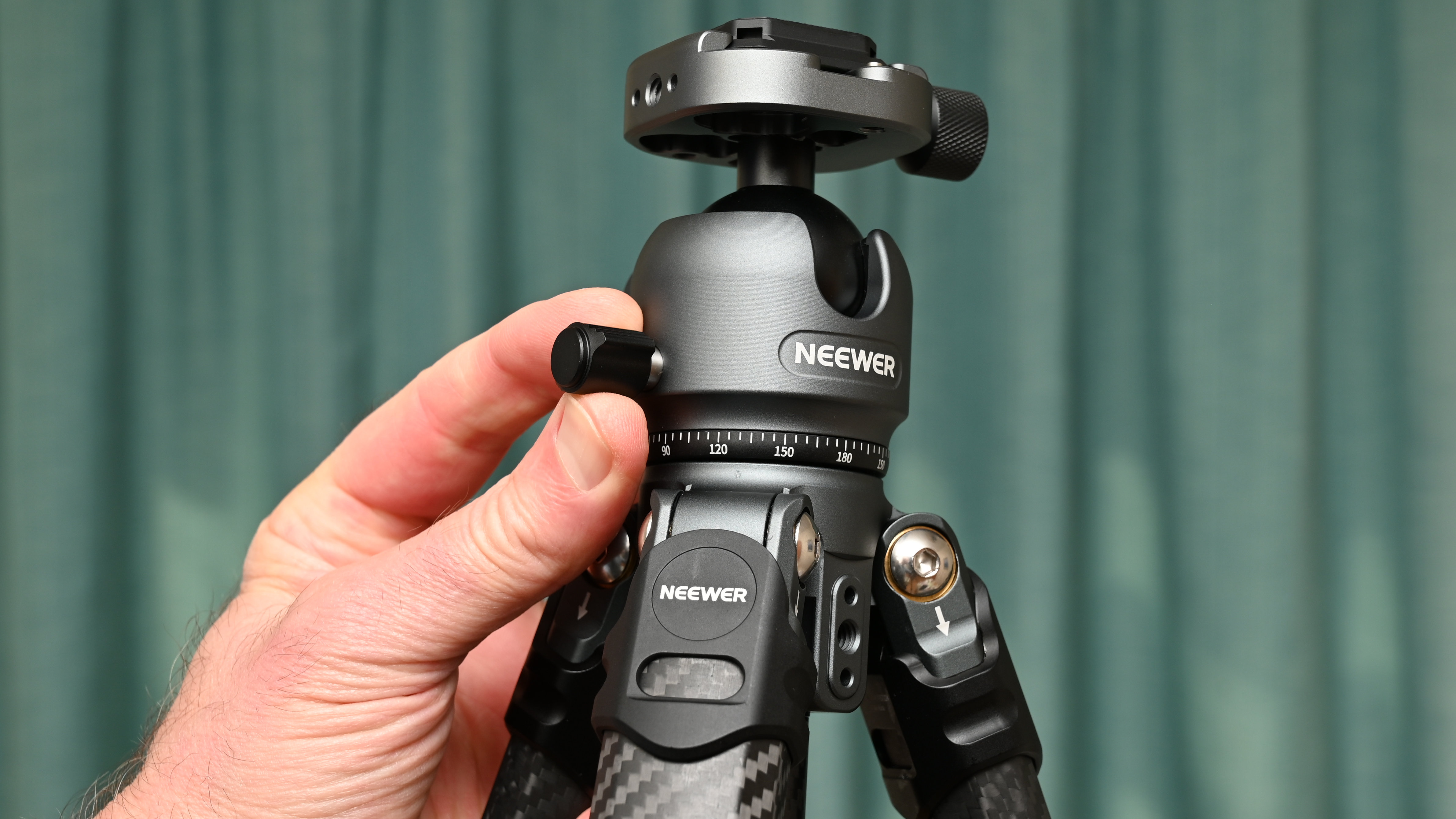
Up top, the head is a good match for the legs. It’s simple but highly effective. First up, it’s a ball head which enables speedy setup with just one main locking clamp. For video as well as panoramic stills, there’s also a panning lock which works independently, and comes with a calibrated scale for its full 360 degrees of rotation.
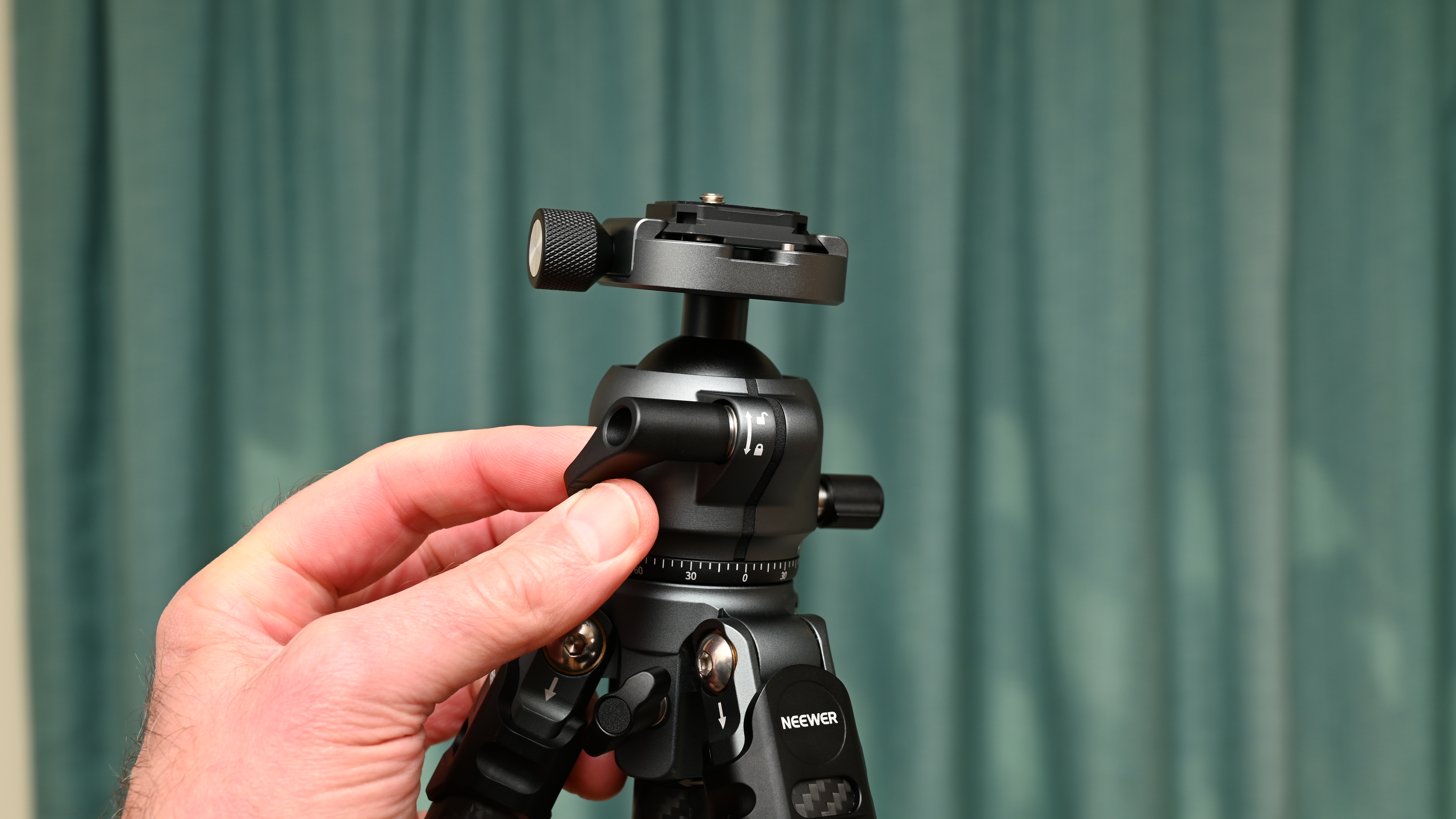
The diameter of the ball is sufficiently generous to offer smooth movement and there’s minimal sagging when locking the ball in place. The locking lever is clearly marked and is spring-loaded on a shaft, so you can pull it out, adjust it to your favored angle and pop it back in again.
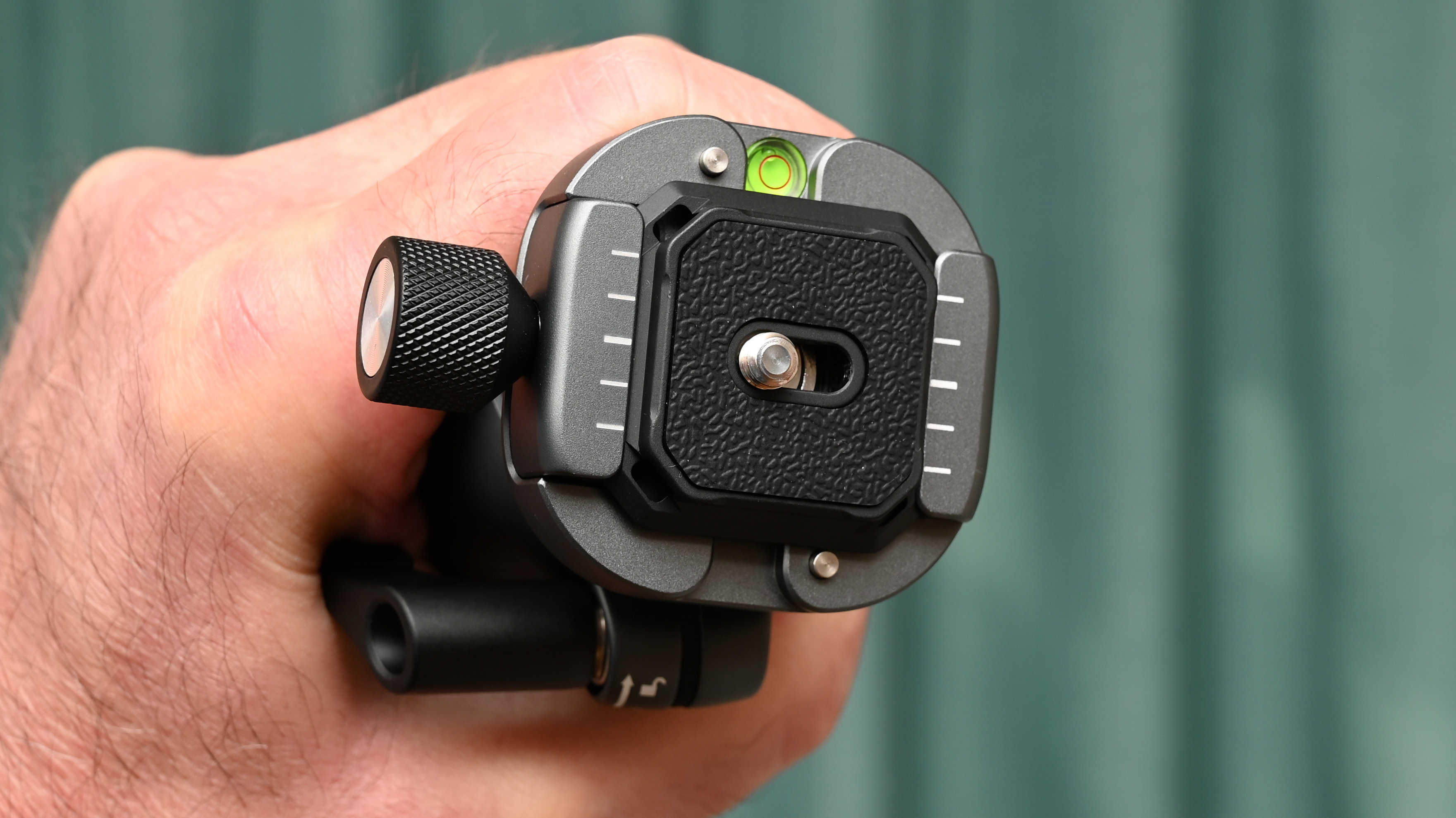
The quick-release plate is Arca-Swiss compatible and fits firmly in its base. The base itself has a bubble level to aid leveling of the camera, as well as spring-loaded security pins front and back to avoid the risk of the plate sliding out unintentionally when you loosen the locking screw.
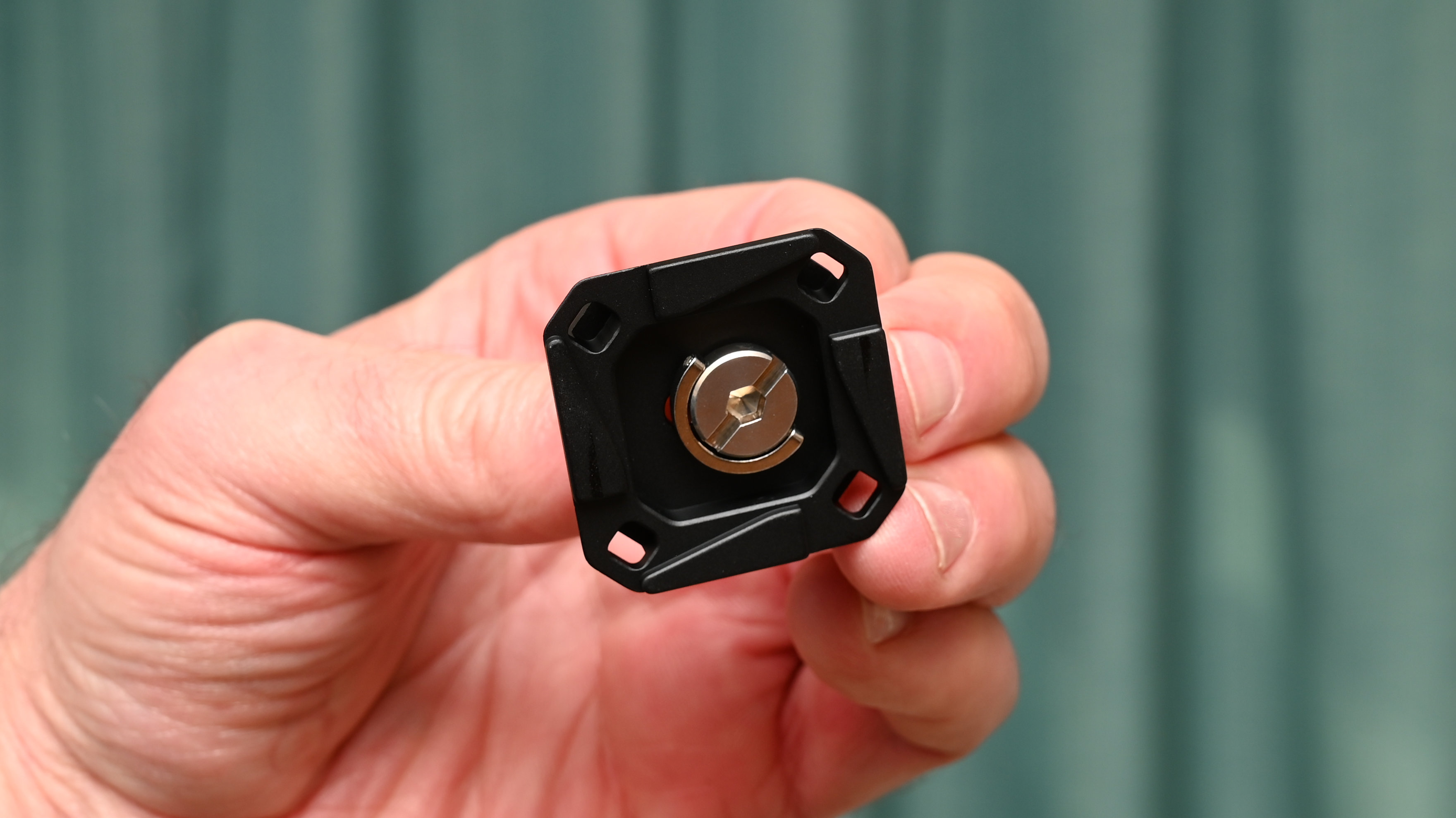
The quick-release plate fastens to your camera of your lens’s tripod mounting collar via a screw that has a D-ring for hand operation, as well as a hex socket and a receptacle for a coin or flat blade.
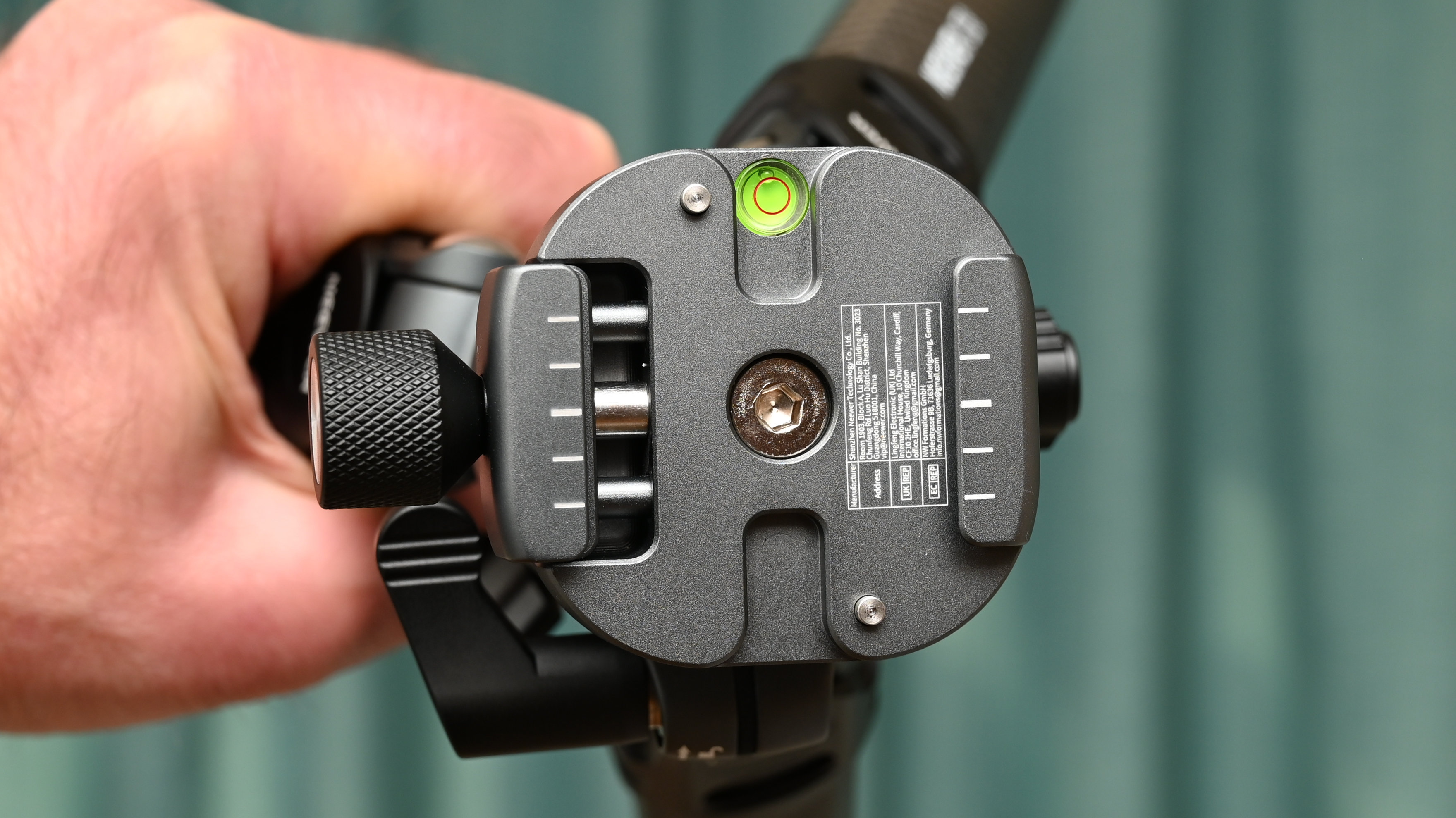
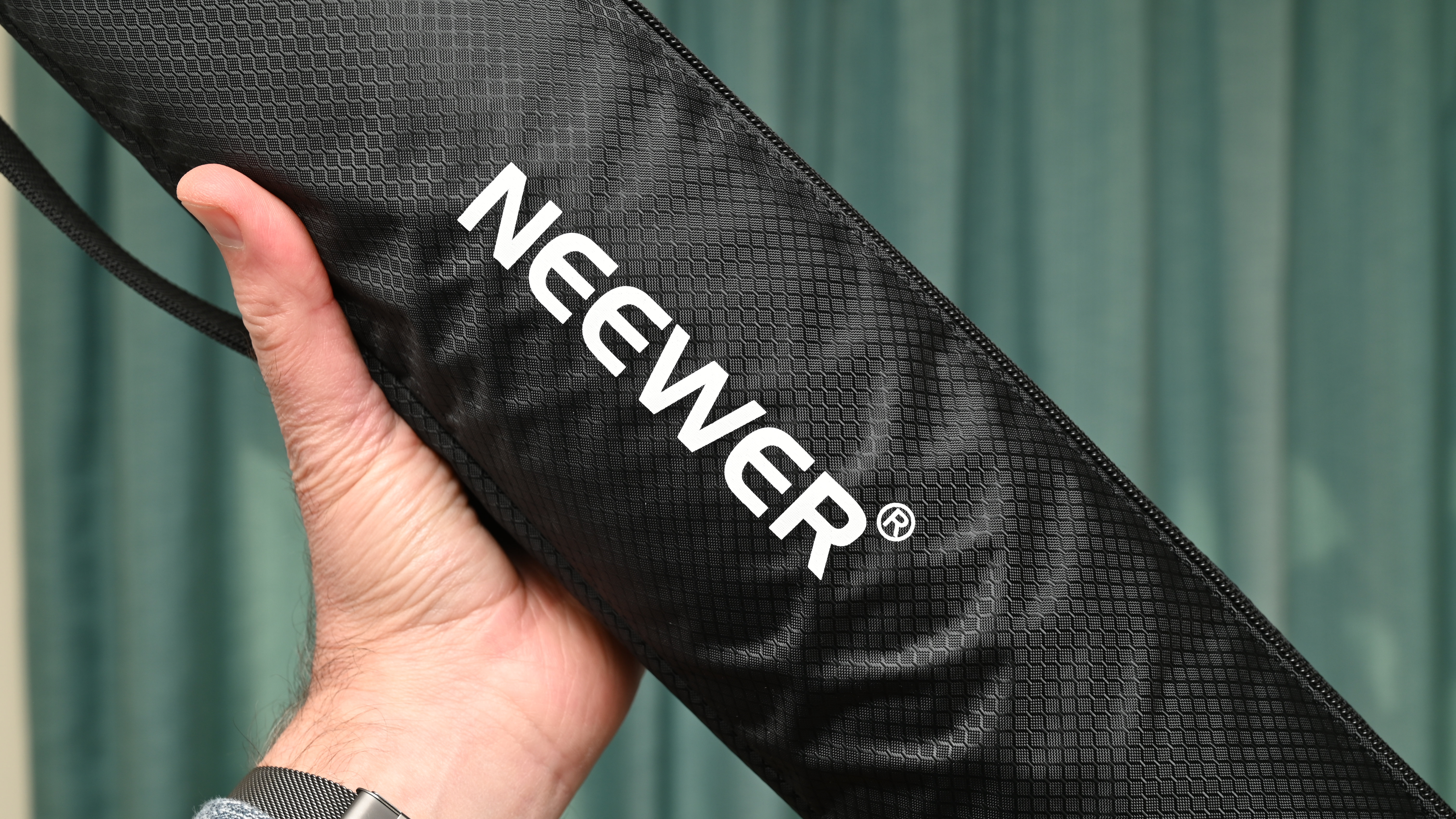
Neewer LiteTrip LT38: Performance
I’m really impressed with the performance of this tripod. Despite the lightweight build of the complete kit of legs and head, at a very travel-friendly 1.43kg / 3.15lb, it has a hefty maximum load rating of 10kg / 22lb. It feels well up to the challenge as well. I’ve used many lightweight travel tripods that, especially at taller operating heights, feel rather wobbly and very prone to vibration. The Neewer absorbs vibration very well and is relatively resistant to unwanted flexing.
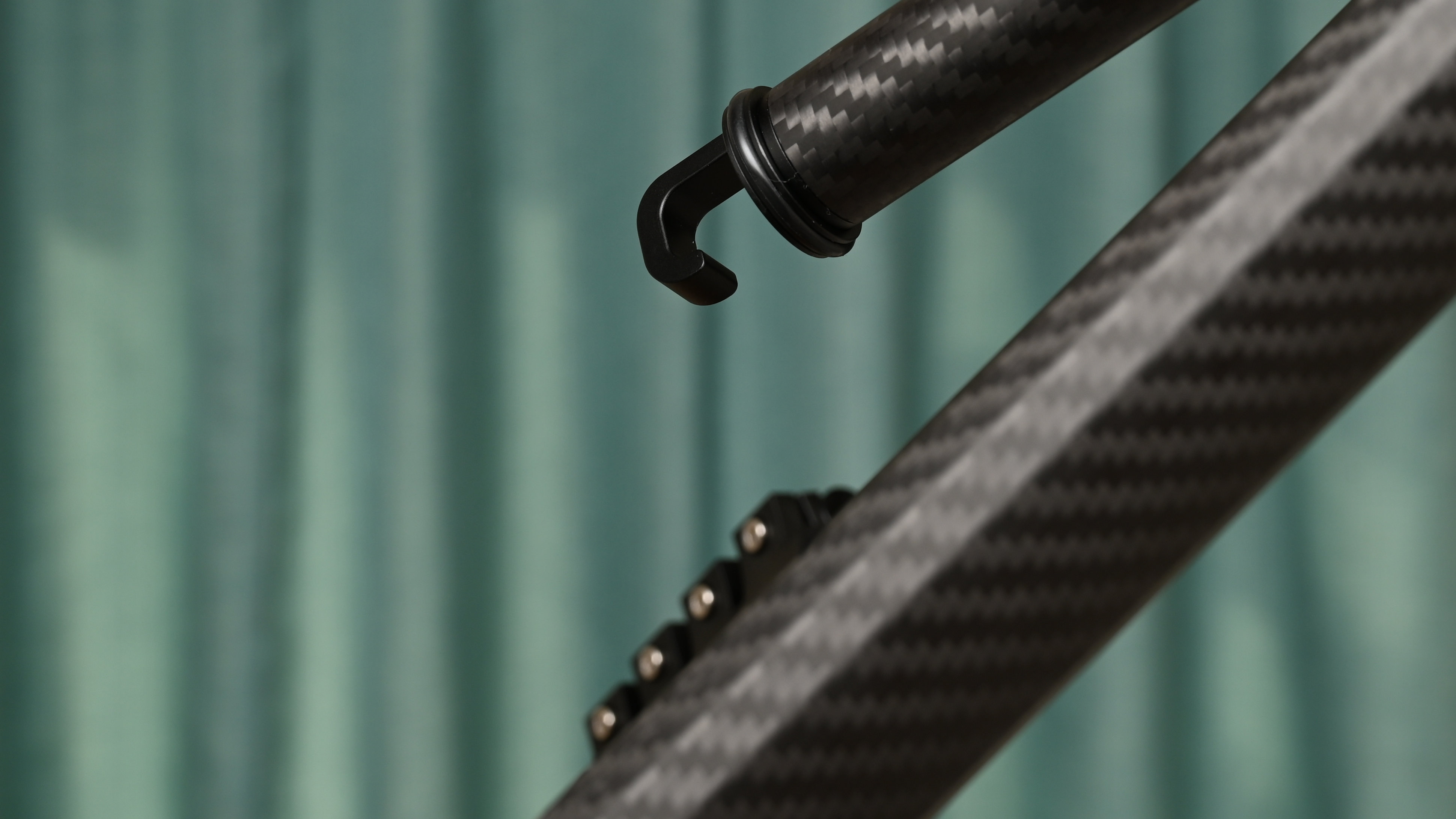
As I’ve mentioned, I like the option of really low-level shooting for creative effect, both for stills and video. Splitting the center column enables this with speed and ease, while also allowing for the camera to be mounted the right way up instead of inverting the center column and shooting with the camera upside down.
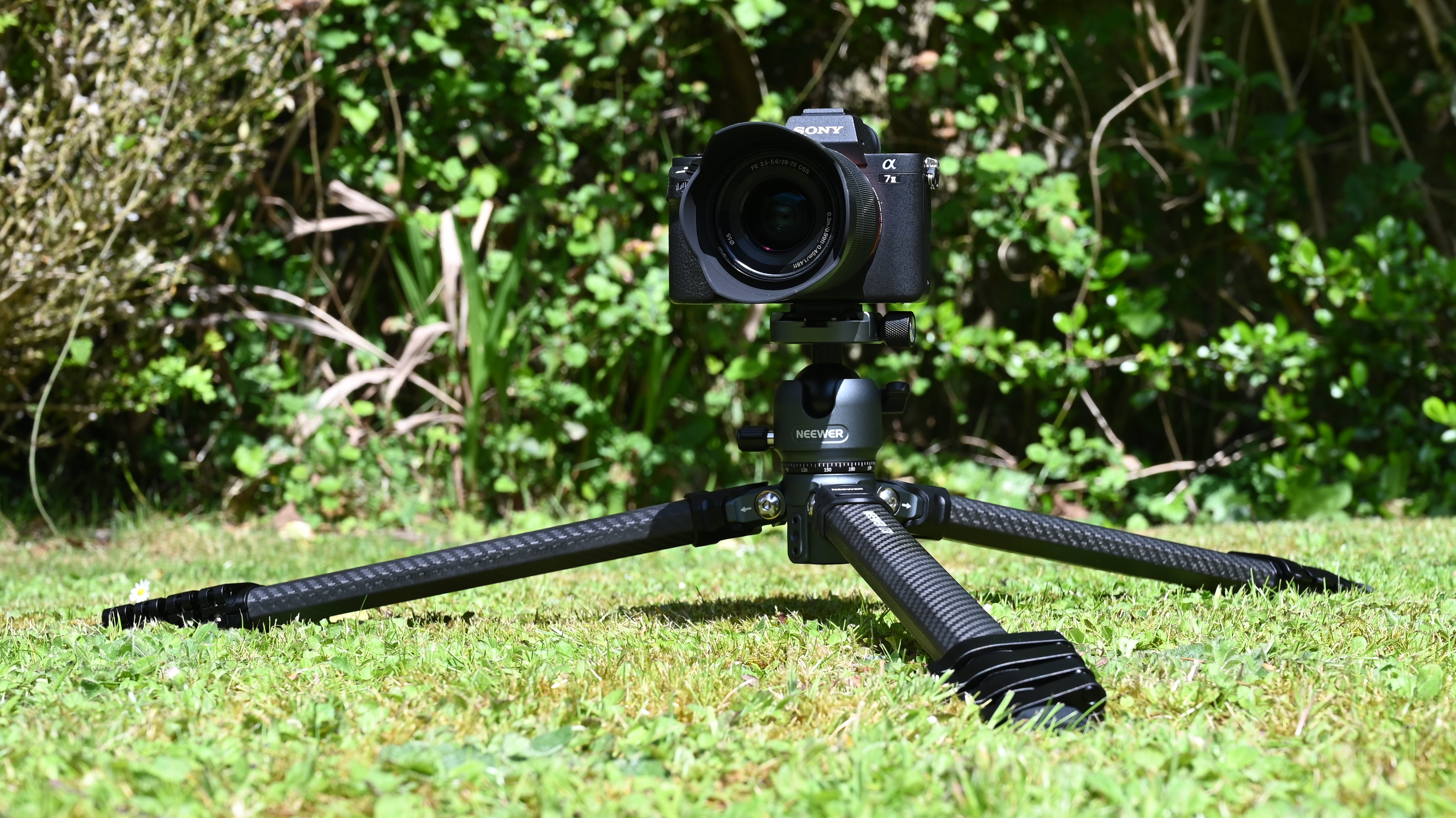
The maximum operating height of 155cm / 61" isn’t a match for full-sized sturdy tripods but it’s pretty generous for a travel tripod that folds down so small. More importantly, it feels impressively stable at its maximum height, with the legs and center column all fully extended.
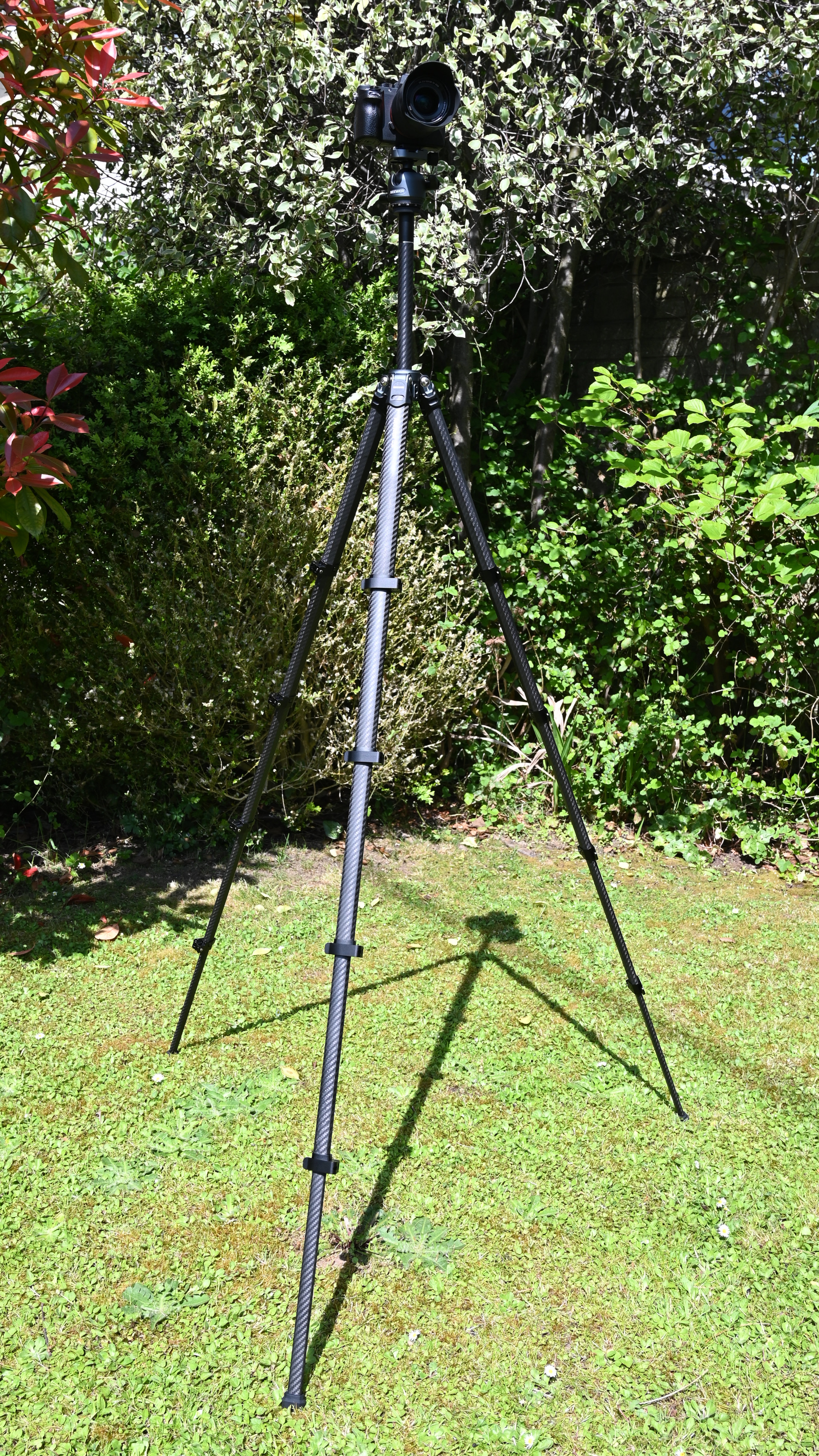
Neewer LiteTrip LT38: Verdict
When it comes to the three-legged race, there are plenty of travel tripods on the market to suit every need and budget. Neewer is somewhat renowned as a company that makes good-quality kit at bargain prices. This travel tripod certainly isn’t cheap to buy but it has a luxury carbon fiber build, a solid yet versatile ball head, and delivers excellent performance in every respect. It’s a winner as far as I’m concerned.
Features ★★★★★ | The 5-section legs, quick-action setup, shaped leg sections, splittable center-column and smart ball head are all excellent. |
Design ★★★★★ | The design really gels, enabling ultra-low-level shooting as well as enabling a generous maximum operating height, at least for a travel tripod. |
Performance ★★★★★ | Unlike many lightweight travel tripods, the Neewer is reassuringly robust, stands firm even at its tallest operating height and is very resistant to vibrations. |
Value ★★★★☆ | It’s toward the more expensive end of the scale for a travel tripod but, considering the quality and performance, it’s very good value. |
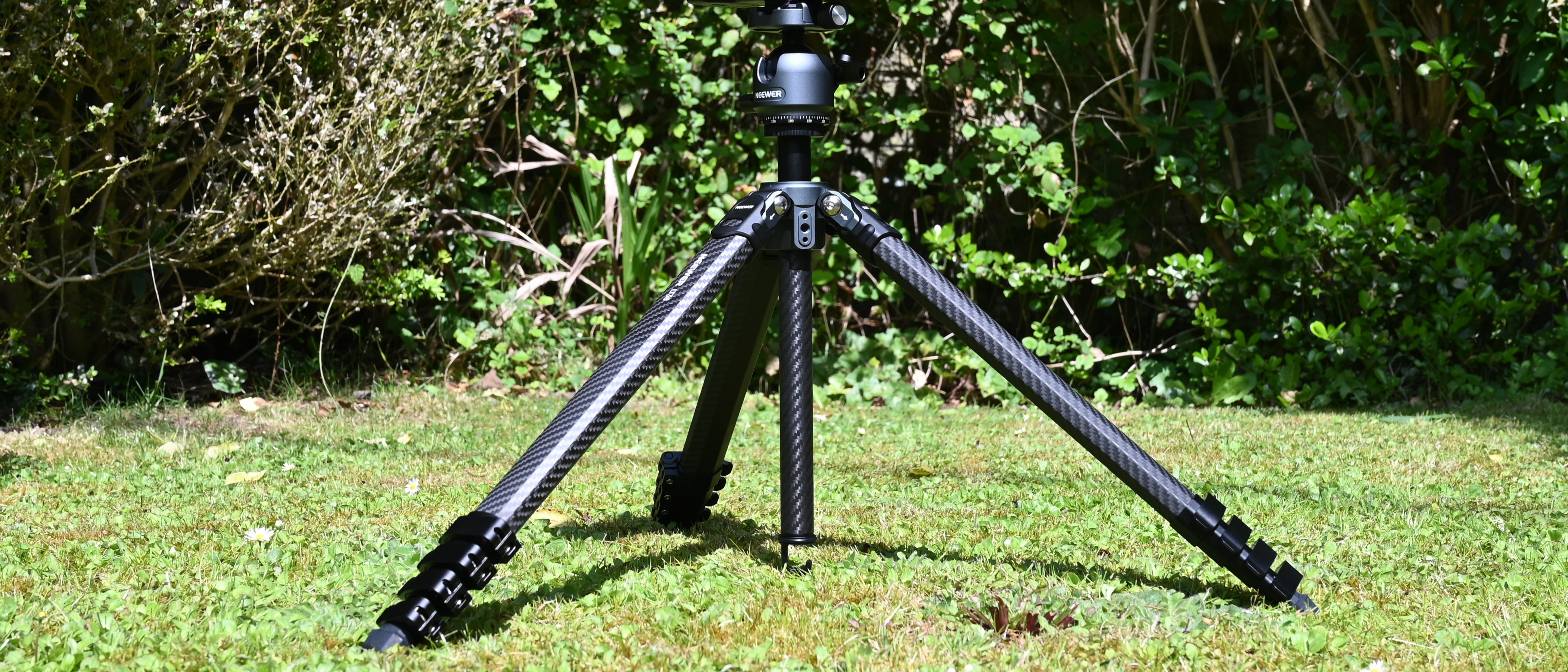
Alternatives
The 3 Legged Thing Leo 2.0 + AirHead Pro folds down to just 37.4cm, weighs 1.85kg and has a super-sturdy 30kg load rating, but it only stretches to a maximum operating height of 146cm.
The Peak Design Travel Tripod caused a big stir when it was launched and remains a particularly innovative travel tripod. The aluminum version is relatively affordable but the carbon fiber edition is very pricey.
Matthew Richards is a photographer and journalist who has spent years using and reviewing all manner of photo gear. He is Digital Camera World's principal lens reviewer – and has tested more primes and zooms than most people have had hot dinners!
His expertise with equipment doesn’t end there, though. He is also an encyclopedia when it comes to all manner of cameras, camera holsters and bags, flashguns, tripods and heads, printers, papers and inks, and just about anything imaging-related.
In an earlier life he was a broadcast engineer at the BBC, as well as a former editor of PC Guide.
You must confirm your public display name before commenting
Please logout and then login again, you will then be prompted to enter your display name.

